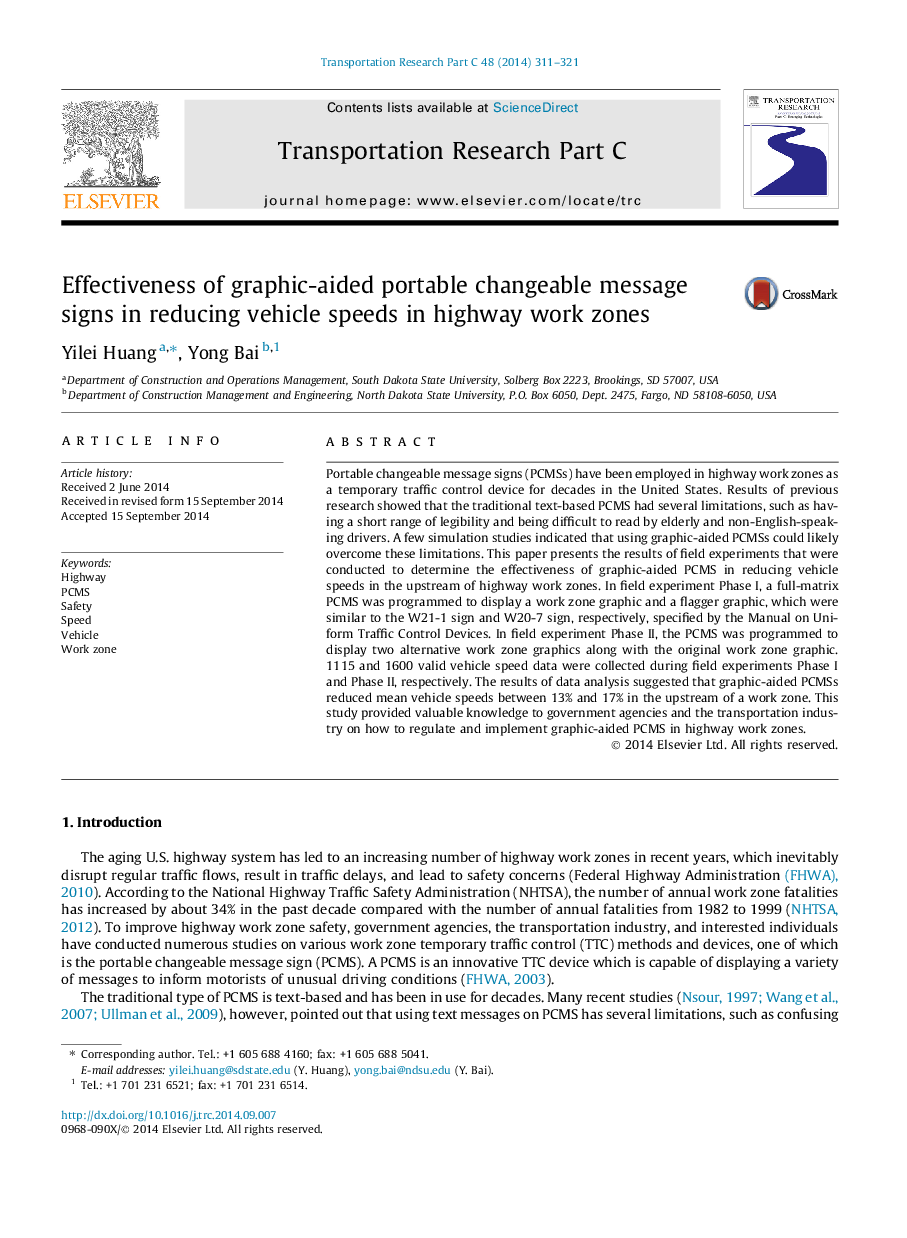| Article ID | Journal | Published Year | Pages | File Type |
|---|---|---|---|---|
| 6937000 | Transportation Research Part C: Emerging Technologies | 2014 | 11 Pages |
Abstract
Portable changeable message signs (PCMSs) have been employed in highway work zones as a temporary traffic control device for decades in the United States. Results of previous research showed that the traditional text-based PCMS had several limitations, such as having a short range of legibility and being difficult to read by elderly and non-English-speaking drivers. A few simulation studies indicated that using graphic-aided PCMSs could likely overcome these limitations. This paper presents the results of field experiments that were conducted to determine the effectiveness of graphic-aided PCMS in reducing vehicle speeds in the upstream of highway work zones. In field experiment Phase I, a full-matrix PCMS was programmed to display a work zone graphic and a flagger graphic, which were similar to the W21-1 sign and W20-7 sign, respectively, specified by the Manual on Uniform Traffic Control Devices. In field experiment Phase II, the PCMS was programmed to display two alternative work zone graphics along with the original work zone graphic. 1115 and 1600 valid vehicle speed data were collected during field experiments Phase I and Phase II, respectively. The results of data analysis suggested that graphic-aided PCMSs reduced mean vehicle speeds between 13% and 17% in the upstream of a work zone. This study provided valuable knowledge to government agencies and the transportation industry on how to regulate and implement graphic-aided PCMS in highway work zones.
Related Topics
Physical Sciences and Engineering
Computer Science
Computer Science Applications
Authors
Yilei Huang, Yong Bai,
